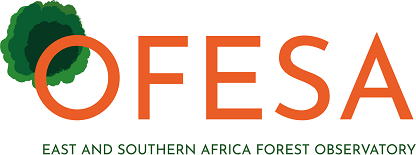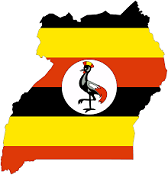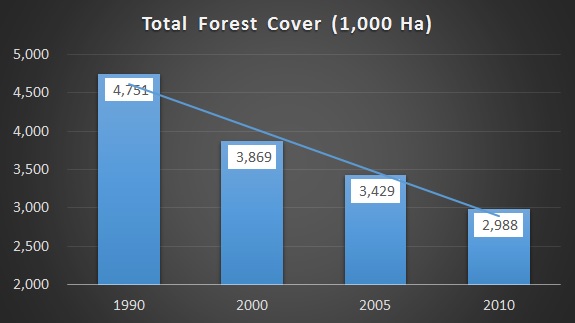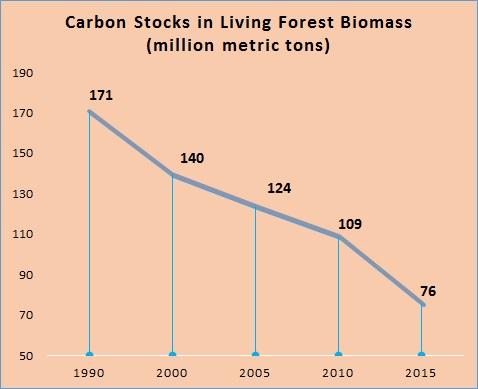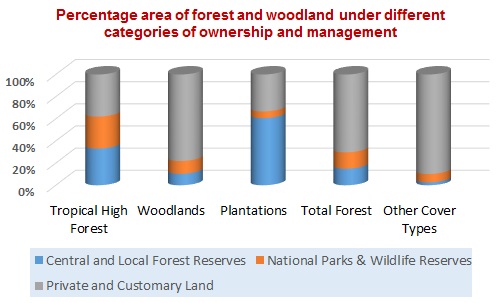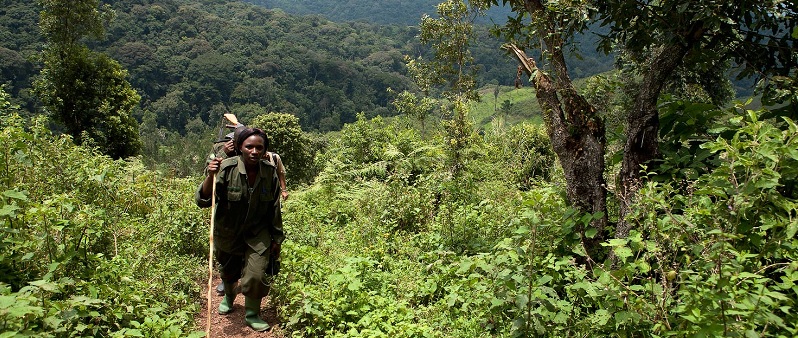
Gorilla Tracking in Bwindi Impenetrable Forest
Forests and woodlands cover approximately 4.7 million hectares which is 24% of the total land area. The vast majority of this is woodland, while the remainder is tropical high forest and forestry plantations. Forestry is crucial to the lives of millions of Ugandans, especially the poorest sections of society. The dependence of poor people on forest resources, and their ability to improve their livelihoods through forestry, has not been adequately recognised in Uganda until now.
The poorest 35% of the population who live below the poverty line are mostly rural, mostly marginalised (unemployed youth, women, elderly), mostly unable to buy or grow fuelwood, mostly without land or productive assets, and thus depend heavily on access to forest resources for their survival. About 2.7 million people (15% of the population) live in parishes that neighbour forest reserves, which provide sources of many forest products and services. Many people from 2 or even 3 parishes away also use these resources, and another 6 million people live within access of the many private forests in the country (70% of the total forested area of Uganda).
Away from forested areas, many millions more farmers use trees on-farm, for firewood, poles or as part of their farming systems. Over three-quarters of all villages in Uganda are involved in selling some tree products, mainly poles, timber, fuel wood and charcoal, and mainly marketed on-farm and not in town markets. Forestry thus forms part of the livelihood of the great majority of Ugandans, mostly in the informal economy and not recorded in official statistics
Decline in forest resources
The trend in Uganda is one of loss of forest cover and degradation of the remaining forest resource base:
- In tropical high forest, about 280,000 hectares is now degraded, representing at least a third of the country's valuable high forest;
- In woodlands, the degradation and clearance is more marked, as most of the current loss of forest cover is in woodland areas;
- In the government Forest Reserves, which cover over 1.1 million hectares, there is less than 740,000 hectares of forest cover, a loss of 35% of forest cover. Of the 20,000 hectares of timber plantations planted on this government land, as little as 6,000 hectares of well-stocked softwood plantations currently remain standing.
